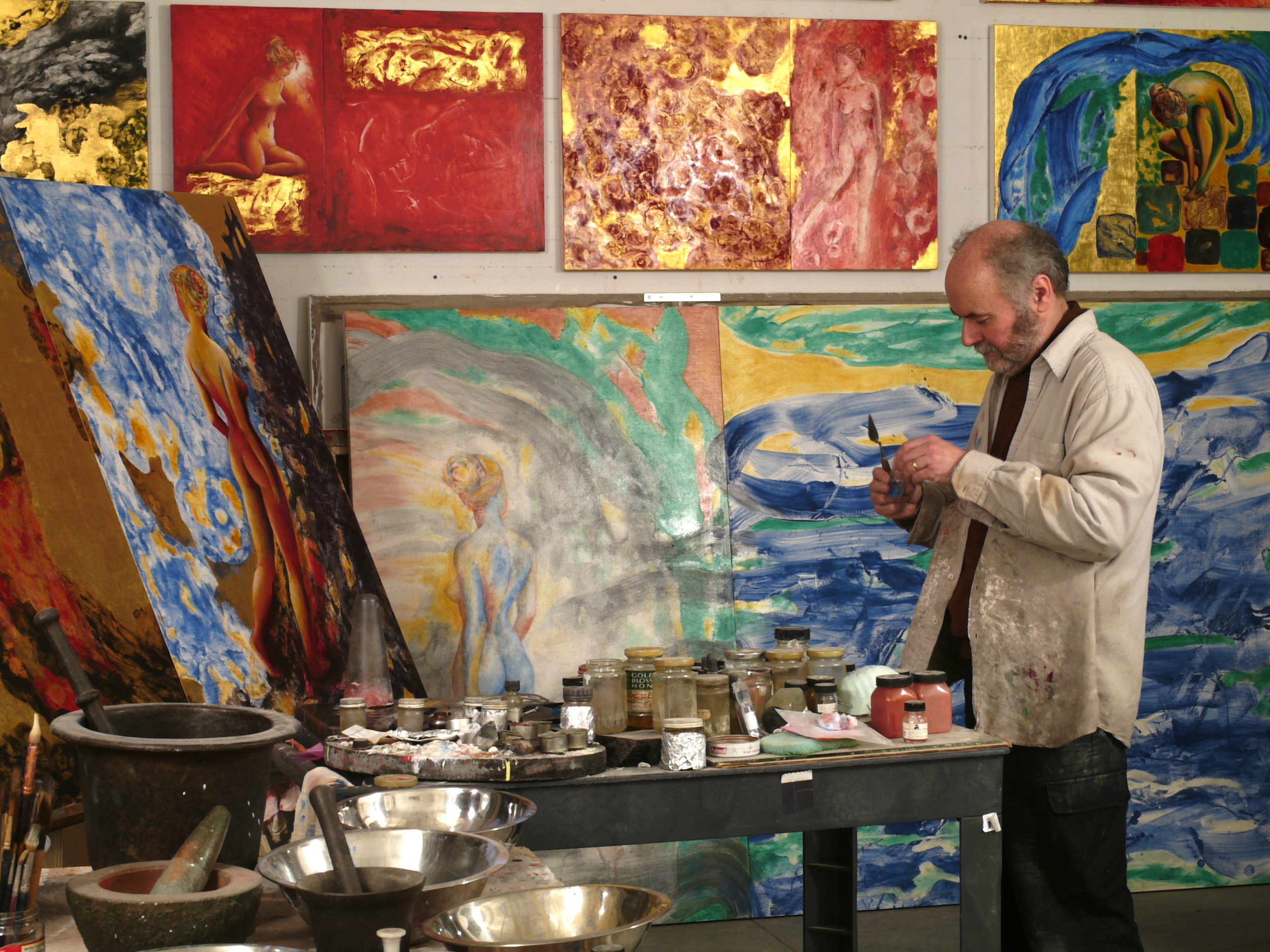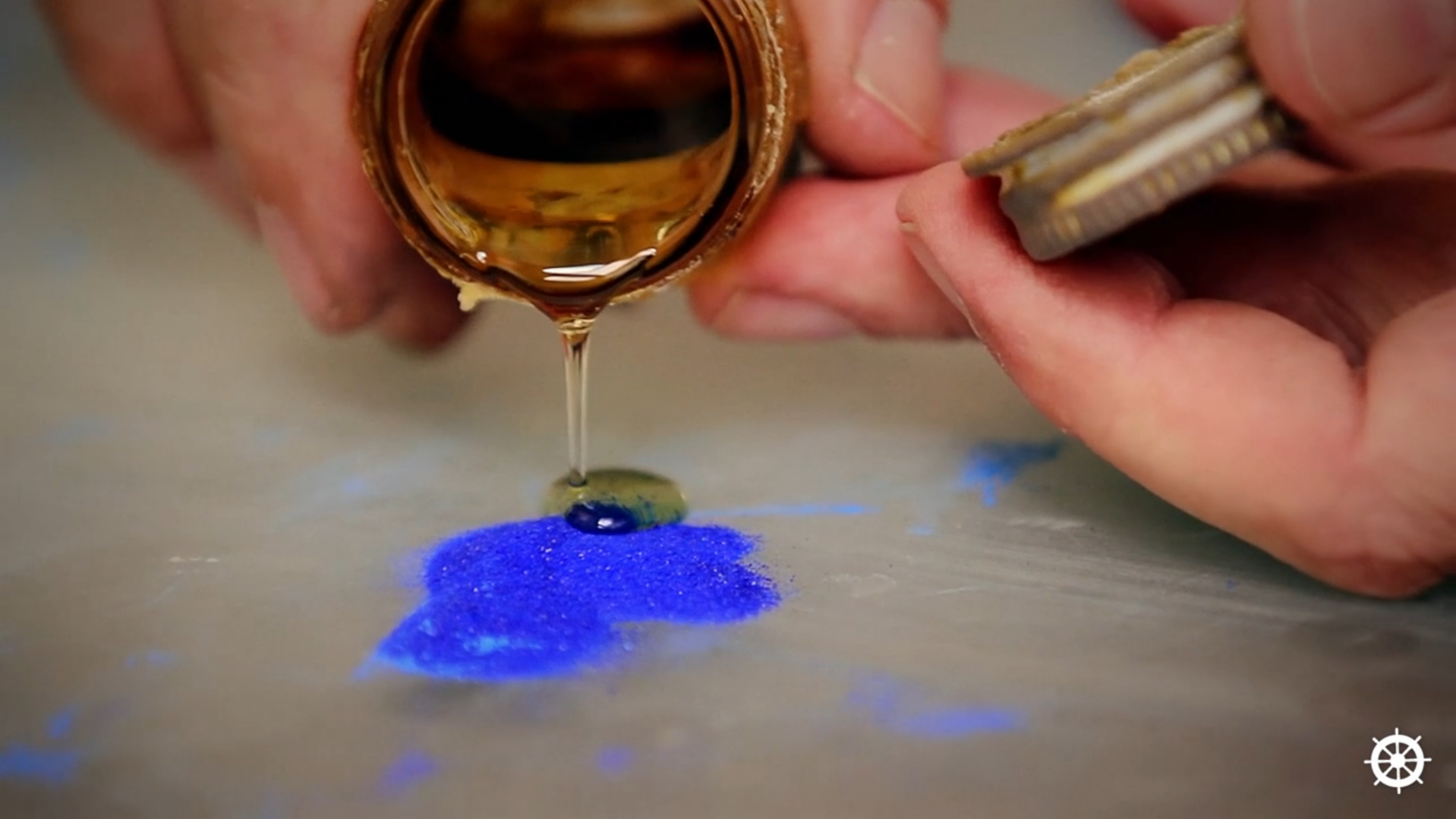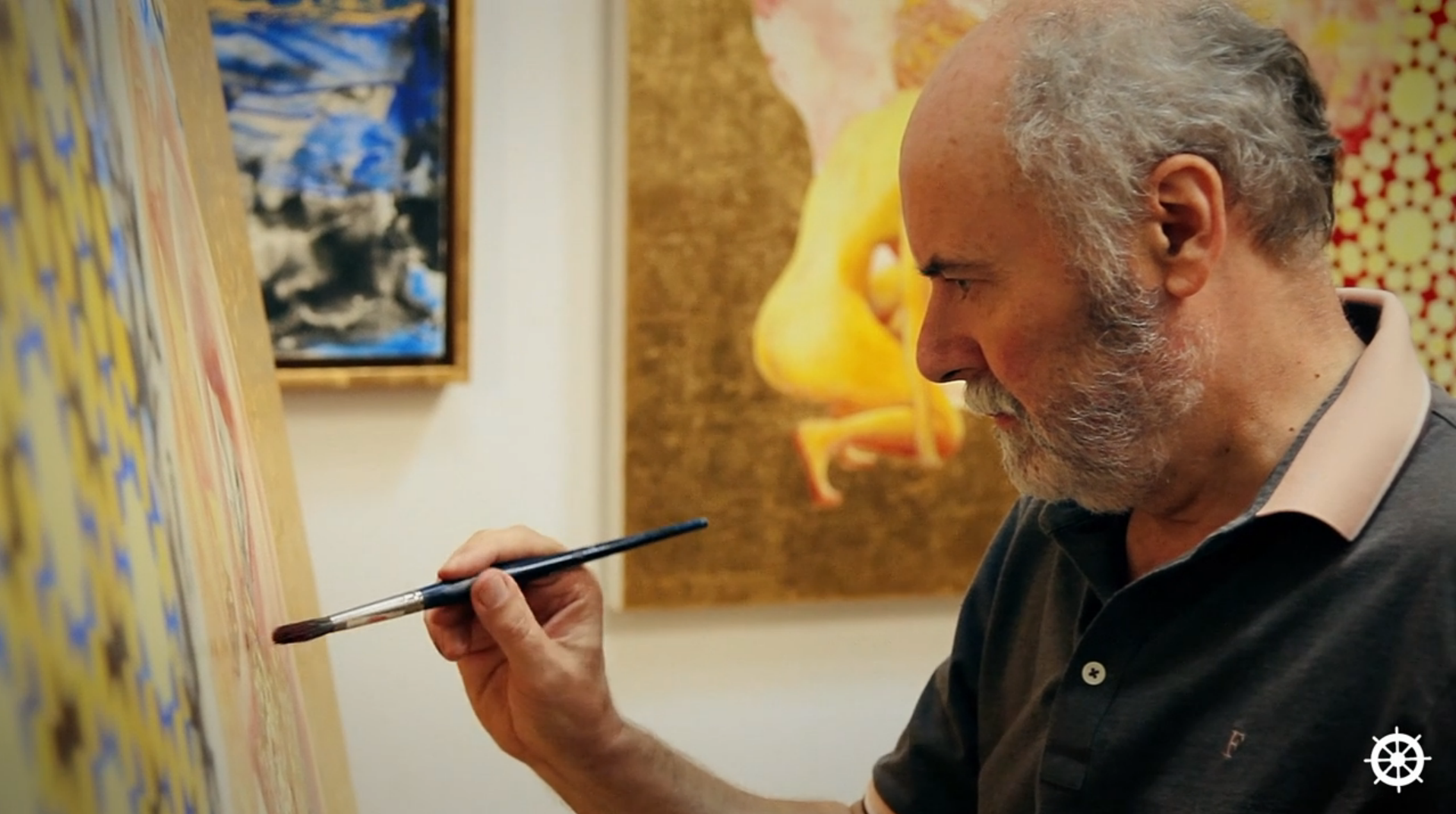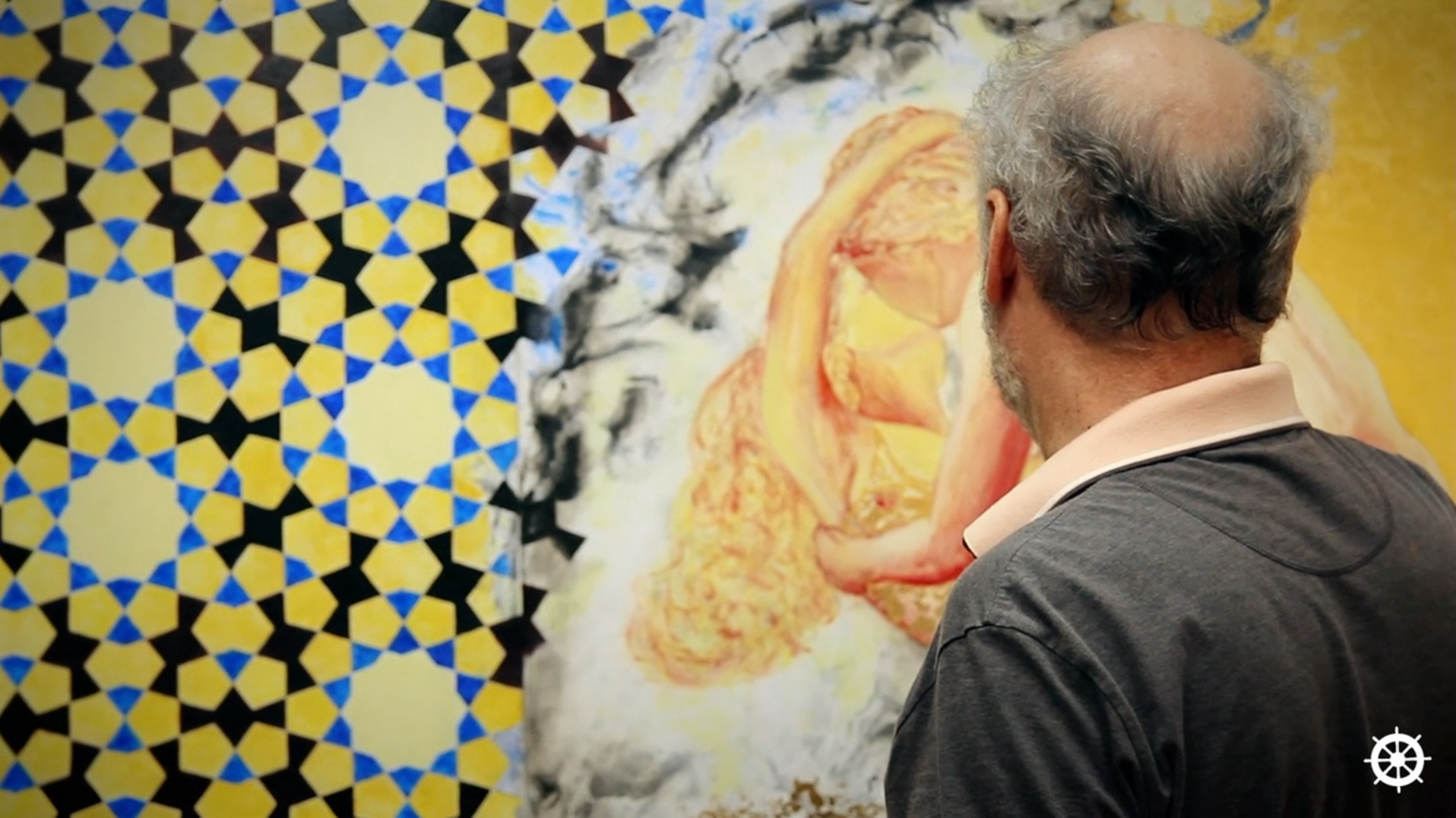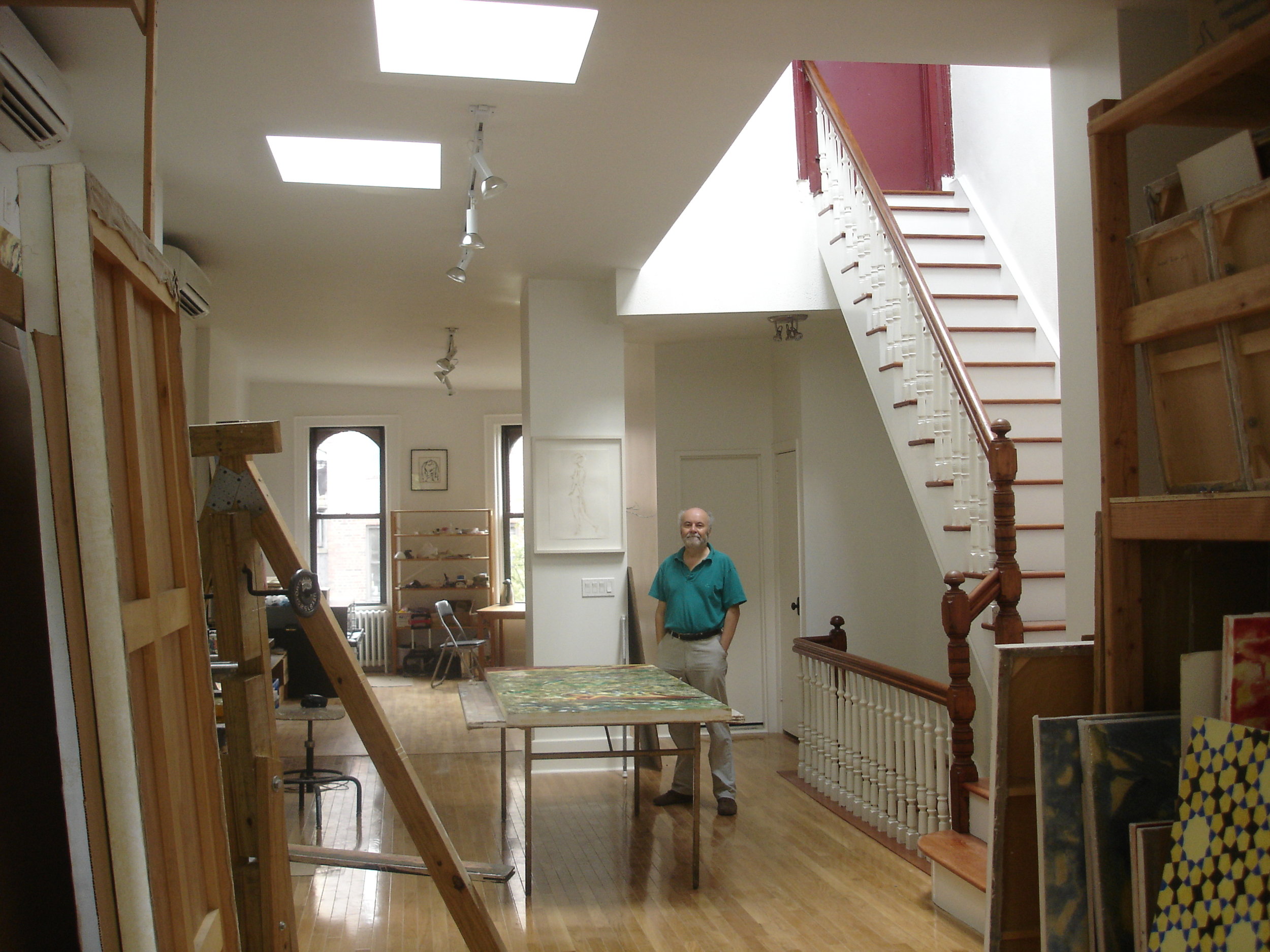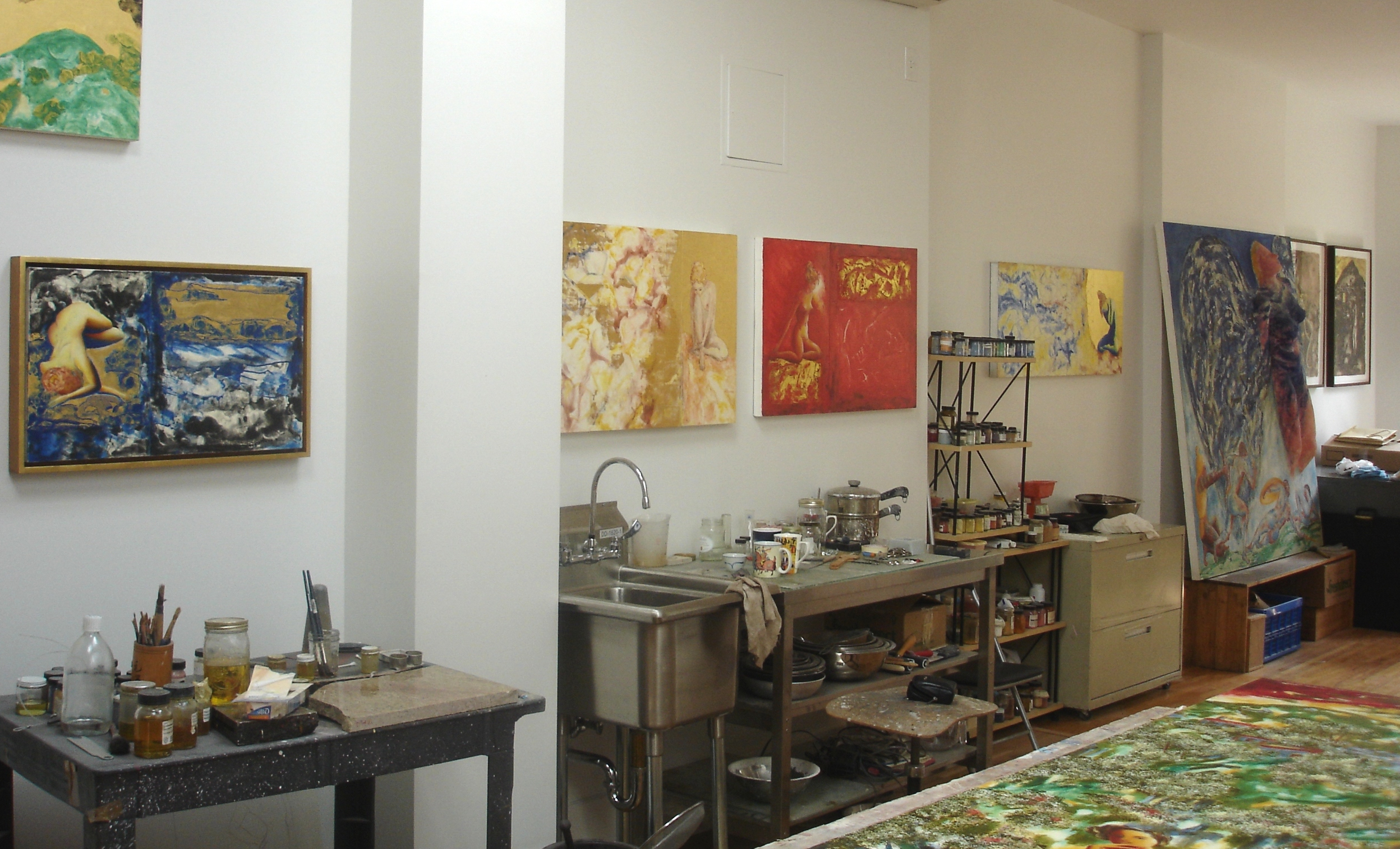about Michael Price
Back in 1989, a good fifteen years after his graduation from the London Central School of Art (now Central St. Martins), Michael Price decided to box all his tube oil paints and set out on a new path with natural colour. Through a series of what the artist described as "meaningful coincidences", he had an opportunity to observe some microscopic paint layer cross-sections of a restored Tintoretto painting at the famous Doerner-Institut in Munich, Germany. This encounter became the artist's epiphany with colour. The full story is told in the Preface to "Renaissance Mysteries".
However, success painting with the mineral pigments on a daily basis was at first a hit and miss affair especially with oil binding mediums. This included rapid discoloration of some paint layers. There seemed to be an unbridgeable chasm between the conservation literature and the actual practice of painting. After a breakthrough with the preparation of azurite which subsequently remained stable in a number of binding mediums, he was able to interest museum conservation departments to carry out a series of aging tests on many paint samples that he provided. The institutes included the Vienna University of Technology in Austria, the Munich Doerner-Institut and the New York MoMA conservation department. These tests and discussions spanned a number of years and documented the aging of all the main natural and mineral pigments in a wide range of binding mediums.
The access to the infra-red and X-radiographs of the Tintoretto painting had also presented another mystery - compass holes in the heads of two main figures and charcoal marks under the paint layers to position life-size figures within a very large canvas. After painstaking work of making one to one measurements from the X-radiographs at the Doerner-Institut, Michael Price began to understand how the geometry of proportion operated within a specific rectangle, in this case a vertical golden rectangle.
Over many years, with further help from museum conservation departments, he was able to obtain exact measurements of painted surfaces of mainly works on panel. With the compiled data, he was able to recreate the construction of rectangles with specific proportions employed by Renaissance artists using basic Euclidean geometry. Solving these diverse, but interconnected problems of colour and composition became the foundation for these two volumes.
Michael Price has restored and preserved for Western culture our Renaissance tradition, that depended on artists and their assistants grinding the semiprecious stones and mixing them with oils according to propriety recipes. Time - and, from my vantage point as an art historian, industrialization - caused the Western culture to irretrievably lose the methods of making natural pigments. Michael Price has single-handedly mitigated that historic loss. His rediscovery of the lost historic methods for preparing mineral pigments reopens and represents this medium for artists across the world. As a teacher and professor of Art History to today’s young artists, I am absolutely convinced that Michael’s painting and speaking presence in the United States will signify a reawakening of that tradition.
-The late James Beck, professor in Art History at Columbia University
